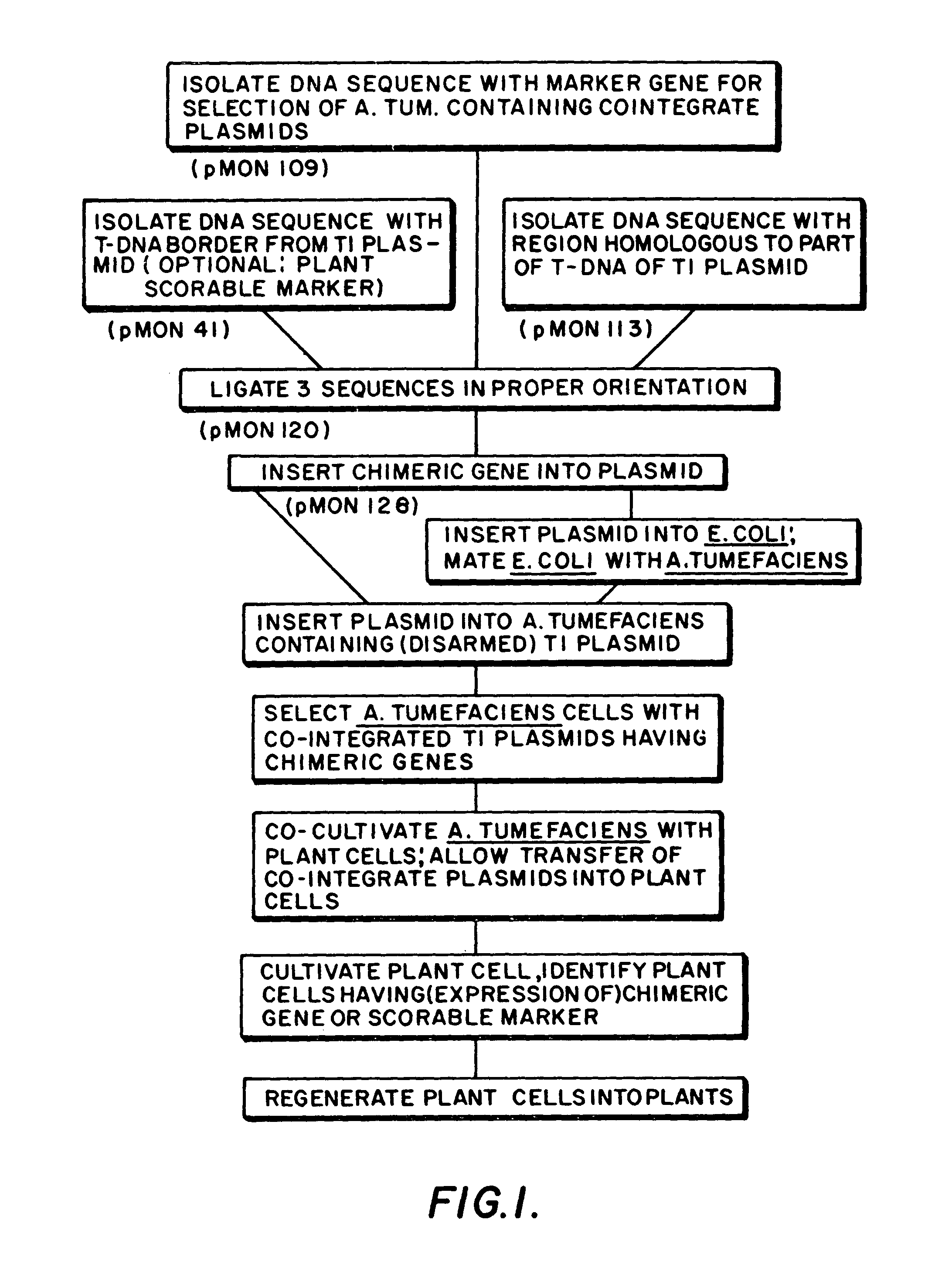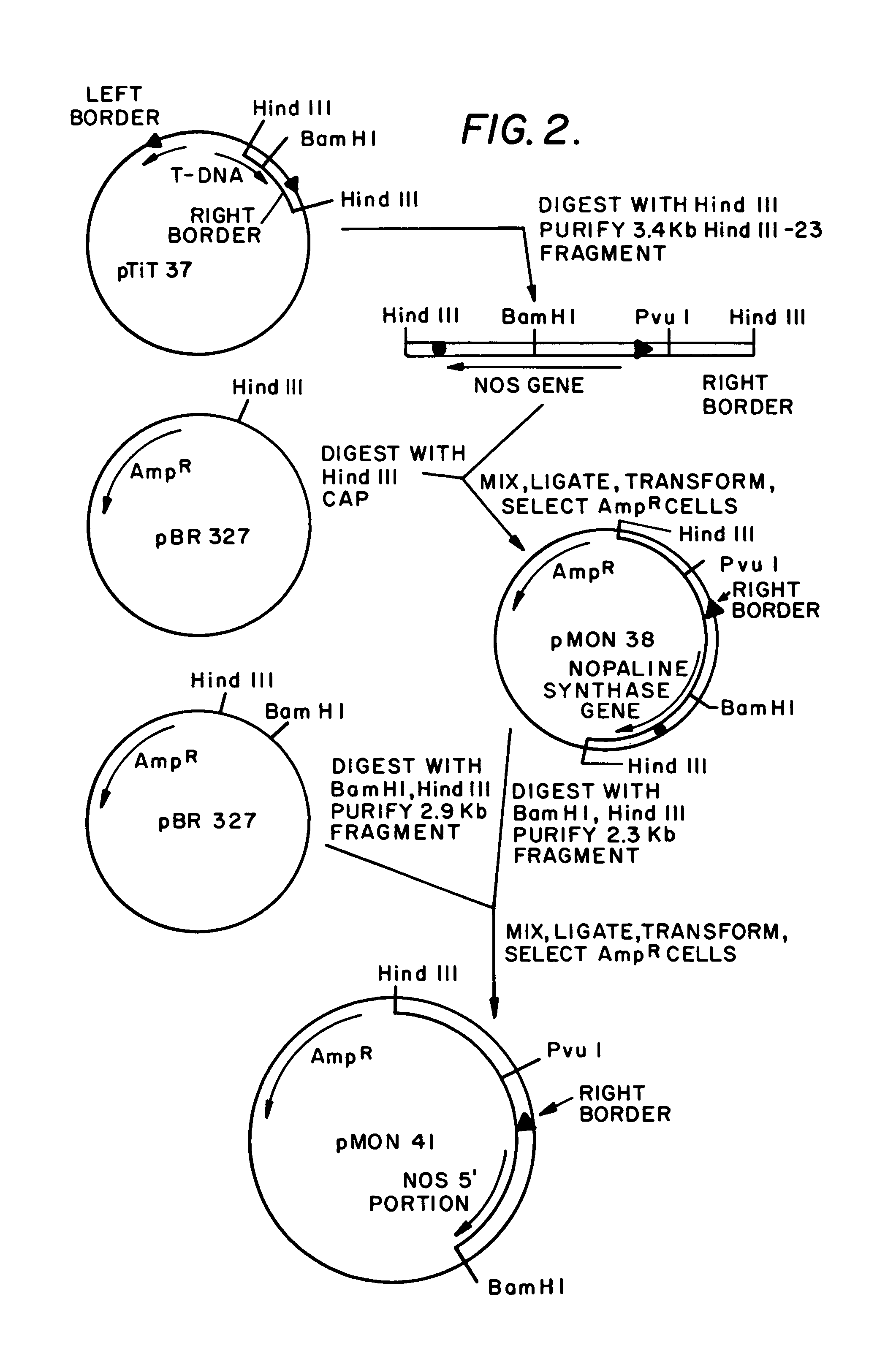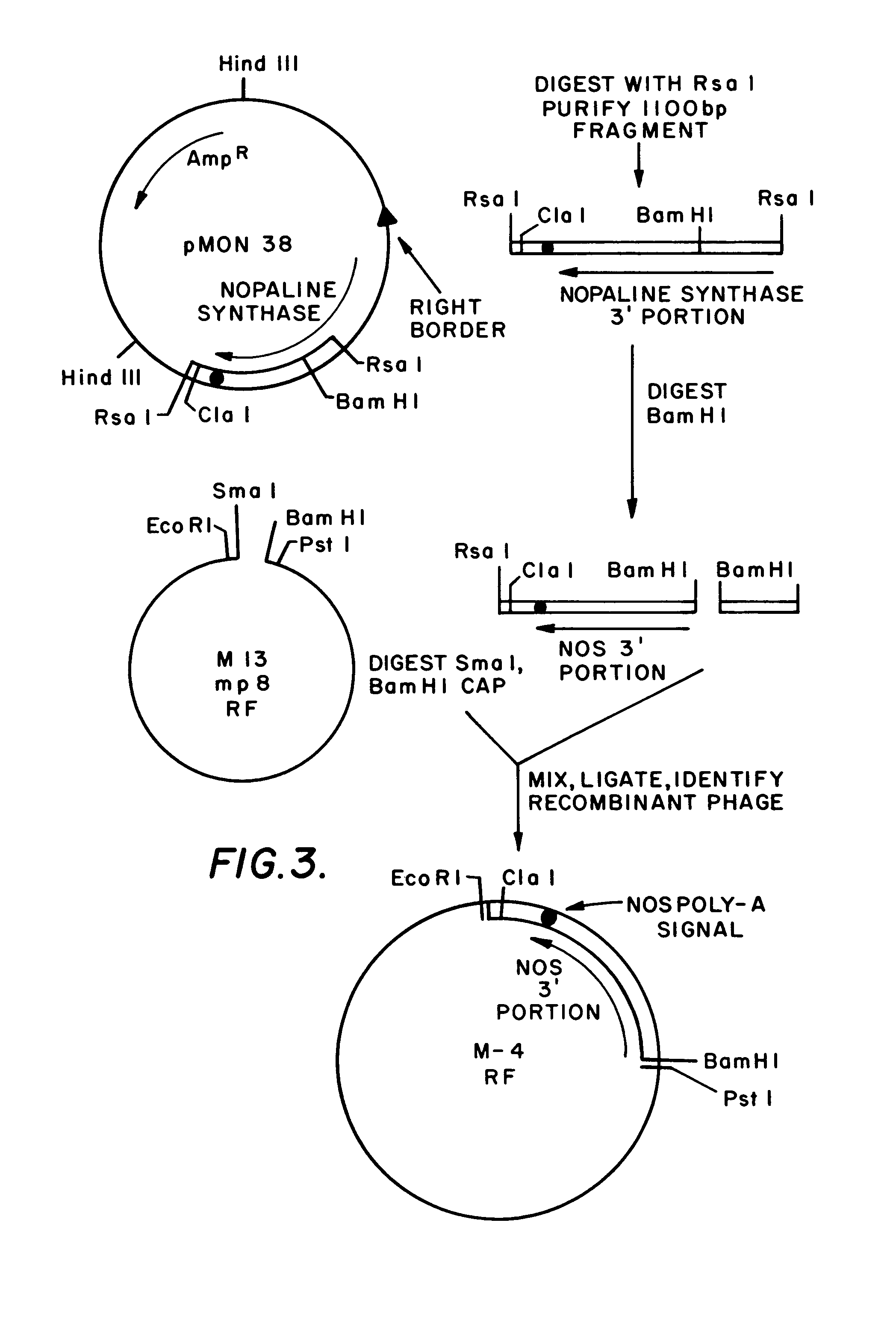Plasmids for transforming plant cells
a technology of plant cells and plasmids, applied in the field of plant biology and bacteriology, can solve the problems of preventing the use of standard recombinant dna techniques, many of the techniques and substances used in animal cells and microorganisms for genetic engineering of plants are not directly applicable to genetic engineering involving plants, and many of the obstacles to such us
- Summary
- Abstract
- Description
- Claims
- Application Information
AI Technical Summary
Benefits of technology
Problems solved by technology
Method used
Image
Examples
example 1
Creation of Plasmid pMON41
[0256]A culture of E. coli, carrying a pBR325 plasmid (Bolivar, 1978) with the HindIII-23 fragment of pTiT37 (Hernalsteens, et al, 1980) inserted at the HindIII site, was obtained from Drs. M. Bevan and M. D. Chilton, Washington University, St. Louis, Mo. Ten micrograms (ug) of the plasmid from this clone was digested with 10 units of HindIII (unless noted, all restriction endonucleases used in these constructions were purchased from New England Biolabs, Beverly, Mass. and used with buffers according to the supplier's instructions) for 1 hour at 37° C. The 3.4 kb HindIII-23 fragment was purified by adsorption on glass beads (Vogelstein and Gillespie, 1979) after separation from the other HindIII fragments by electrophoresis on a 0.8% agarose gel. The purified 3.4 kb HindIII fragment (1.0 ug) was mixed with 1.0 ug of plasmid pBR327 DNA (Soberon, et al, 1980) that had been digested with both HindIII (2 units, 1 hour, 37° C.) and calf alkaline phosphatase (CAP...
example 2
Creation of M13 Clone M-4
[0259]Thirty ug of plasmid pMON38 (described in Example 1) were digested with RsaI (30 units, 2 hours, 37° C.) and the 1100 bp RsaI fragment was purified after separation by agarose gel electrophoresis using the glass bead method described in the previous example. The purified 1100 bp RsaI-RsaI fragment (1 ug) was digested with 2 units of BamHI and the BamHI was inactivated by heating. This DNA was mixed with 0.2 ug of phage M13 mp8RF DNA which had been previously digested with SmaI and BamHI (2 units each, 1 hour, 37°) and 0.2 units of calf alkaline phosphotase (CAP). Following ligation with 100 units of T4 DNA ligase, transformation of E. coli JM101 cells as described in the previous example, the transformed cells were mixed with soft agar and plated under conditions that allow the identification of recombinant phage (Messing and Vieira, 1982). Twelve recombinant phage producing cells were picked and RF plasmid mini-preps were obtained as described in the ...
example 3
Construction of pMON109
[0260]Twenty ug of plasmid pGV3106 (Hernalsteens et al 1980, prepared by the method of Currier and Nester 1976) was digested with HindIII (20 units, 2 hours, 37°) and mixed with 2 ug of HindIII-digested pBR327. Following ligation (T4 DNA ligase, 2 units) and transformation of E. coli cells as described above, one colony resistant to trimethoprim (100 ug / ml) and ampicillin was obtained. Digestion of plasmid DNA from this cell demonstrated the presence of a 6 kb HindIII fragment. This plasmid was designated pMON31.
[0261]Plasmid pMON31 from a mini-prep (0.5 ug) was digested with EcoRI (1 unit, 1 hour, 37° C.) and the endonuclease was inactivated by heating (10 min, 70° C.). The 8.5 kb plasmid fragment was re-circularized in a ligation reaction of 100 ul (T4 DNA ligase, 1 unit) and used to transform E. coli cells with selection for ampicillin and streptomycin (25 ug / ml) resistant colonies. Plasmid mini-prep DNA's from six clones were digested with EcoRI to ascerta...
PUM
| Property | Measurement | Unit |
|---|---|---|
| Electrical resistance | aaaaa | aaaaa |
Abstract
Description
Claims
Application Information
 Login to View More
Login to View More - R&D
- Intellectual Property
- Life Sciences
- Materials
- Tech Scout
- Unparalleled Data Quality
- Higher Quality Content
- 60% Fewer Hallucinations
Browse by: Latest US Patents, China's latest patents, Technical Efficacy Thesaurus, Application Domain, Technology Topic, Popular Technical Reports.
© 2025 PatSnap. All rights reserved.Legal|Privacy policy|Modern Slavery Act Transparency Statement|Sitemap|About US| Contact US: help@patsnap.com



